Surge/Pulse Voltages of Resistors
A resistor has a “Rated Voltage” that is determined by a rated power and a resistance value. Basically, a voltage exceeding this rated voltage cannot be applied, but some companies may specify their own tolerance range for pulse/surge.
We have our internal regulations for our products as the following. If the conditions are met, our products can be used in excess of the rated voltages.
1. Maximum Overload Voltage → We have the regulation that short-time overload is 2.5 seconds.
2. Single Pulse → We have the regulation that single pulse is 1 second or less.
3. Repetitive Pulse
(For details of each of the above conditions, please check the catalog and specifications, or contact us before use.)
For the above “2. Single Pulse” and “3. Repetitive Pulse”, refer to the following details, examples, and the flowchart for considering the use of a resistor based on pulse load.
– – – – – – – – – – – – – – – – – – – – – – – – – – – – – – – – – – – – – – – – – – – – – –
I . Flow Chart for Considering the Use of Resistors Based on Pulse Load
If any pulse is loaded, consider the use of a resistor using the flowchart below.
However, please use the flowchart only as a guide. Please be sure to check resistors with the actual equipment when designing.
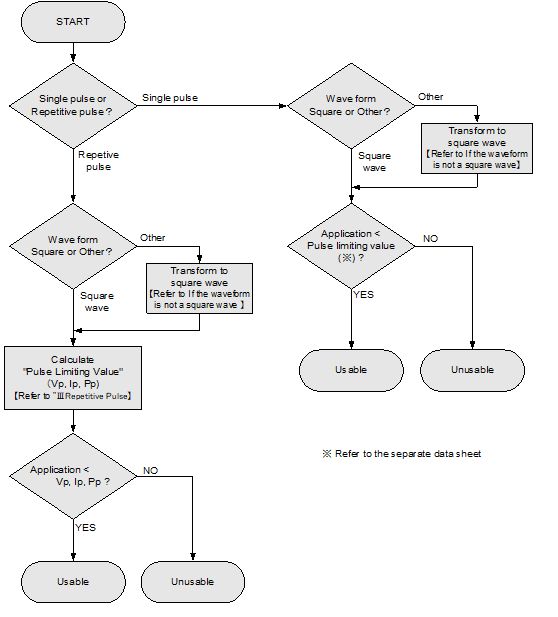
II. Single Pulse
Pulses applied to resistors are usually measured as voltage or current waveforms. “Single Pulse Limiting Power” is specified as a square wave, so if the measured waveform is other than a square wave, it should be converted to a square wave. (For the conversion method, refer to [If the waveform is not a square wave].) Convert the square wave obtained by the above method into a power waveform and evaluate it by referring to the “Single Pulse Limiting Power” of each series.
Obtain the pulse limiting power from the pulse duration time and use resistors with loads below the pulse limiting power.
The “Single Pulse Limiting Power” is set for each series. Please contact us if you would like further information.
→ Click here to contact us.
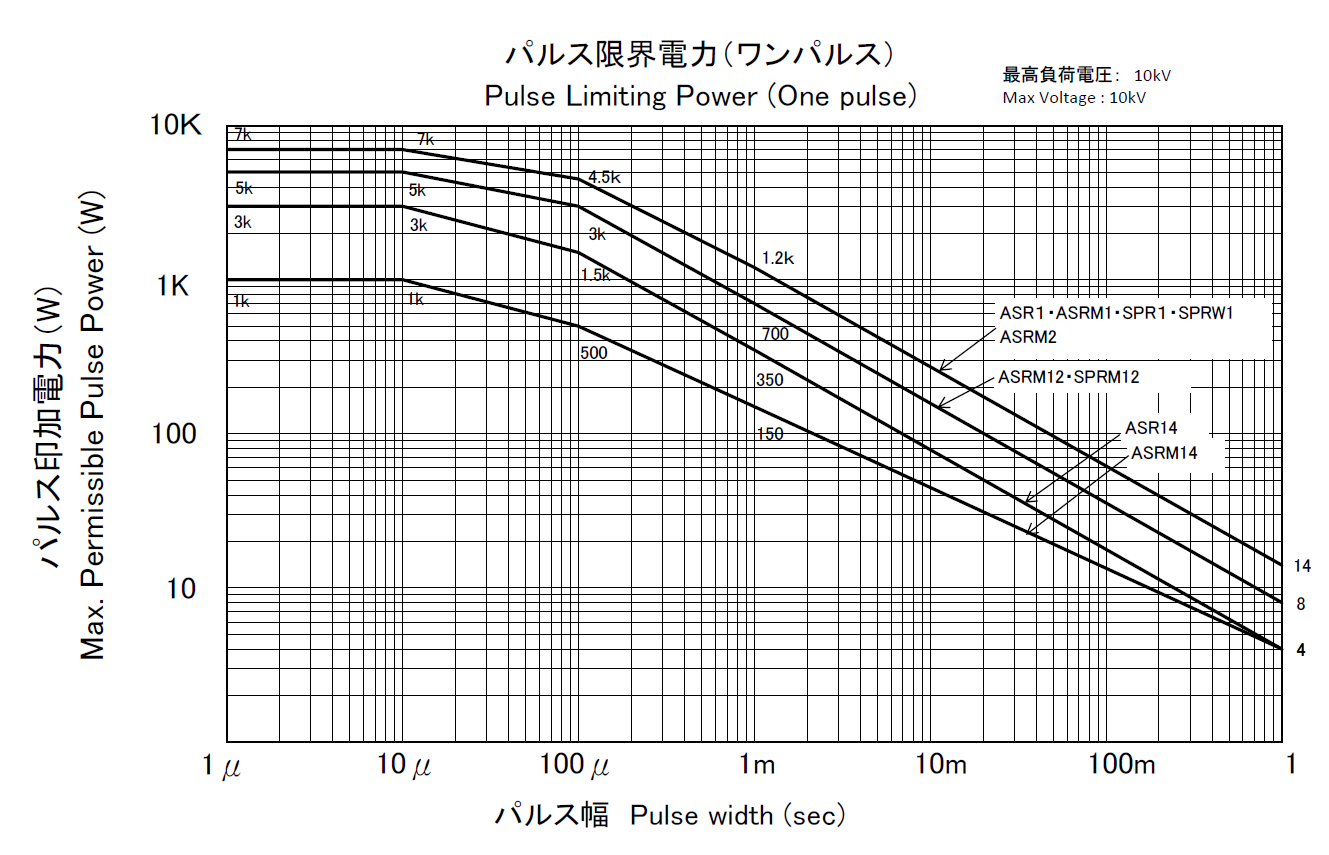
【If the waveform is not a square wave】
If the applied waveform is not a square wave, convert it by referring to the following.
(The following can also be applied to repetitive pulses.)
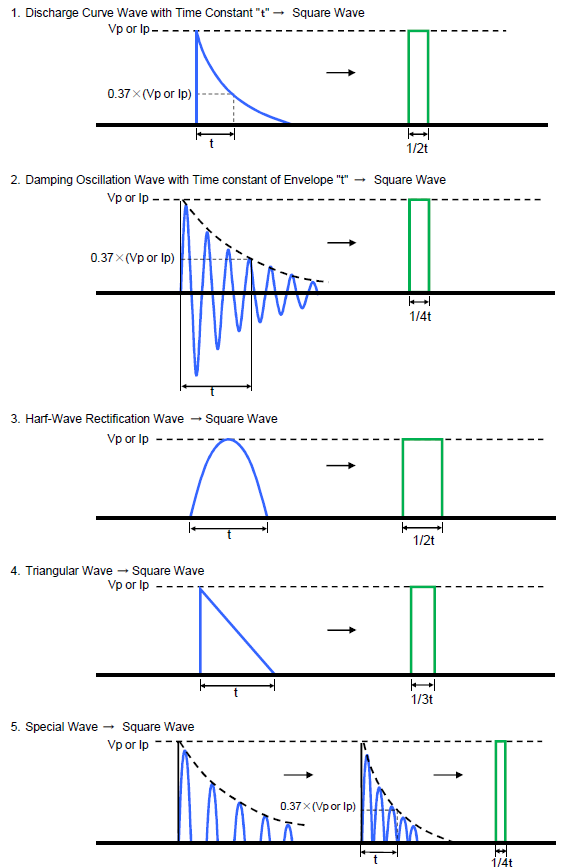
References: EIAJ RCR-2121B Precautions Guidelines for using fixed resistors for electronic devices (JEITA)
III. Repetitive Pulses
If repetitive pulses are loaded, the voltage, current or power applied to the resistor must be less than “Pulse limiting voltage(current)” or “Pulse limiting power” calculated by the formula below:

Where: Vp : Pulse limiting voltage (V)
Ip : Pulse limiting current (A)
Pp : Pulse limiting power (W)
P : Power rating (W)
R : Nominal resistance (Ω)
T : Repetitive period (sec)
t : Pulse duration (sec)
K : Coefficients by resistor type (refer to the table below)
[Vr : Rated Voltage (V), Ir : Rated Current (A)]
Note 1: If T>10 → T=10 (sec), If T/t > 1000 → T/t = 1000
Note 2: If T>10 and T/t>1000, “Pulse Limiting power (Single pulse)” is applied
Note 3: If Vp<Vr (lp<lr or Pp<P), then Vr (Ir, P) is Vp (Ip, Pp)
Note 4: The above pulse limiting voltage is applied at less than rated ambient temperature 70℃.
f ambient temperature is more than the rated temperature 70 ℃,
decrease power rating (P) according to Power Derating Curve”
Note 5: Assure sufficient margin for the pulse limit voltage calculated
by the above formula in consideration of the usage period/conditions.
Note 6: If Vp> “Maximum overload voltage for each series”,
the maximum overload voltage is defined as Vp.
Note 7: Assure sufficient margin for the pulse limit voltage/power calculated
by the above formula in consideration of the usage period/conditions.
The coefficient K for each series of our main products is as follows.

As there are many notes, it seems complicated. But the meaning of the Vp calculation formula is as follows in a word.
“Do not destroy with one pulse. The average power should be below the power rating of the resistor (and some margin should be secured).”
IV. Specific Example
The following are typical resistors used in power supply circuits. The switching power supply is one of the power supply devices that converts and adjusts electric power using switching elements, and stabilizes the output by converting and adjusting electric power. By this switching, pulse power is applied to gate resistors, current sensing resistors, and snubber resistors. In addition, when the power is turned ON/OFF, a large pulse power is applied to inrush current prevention resistors and discharging resistors.
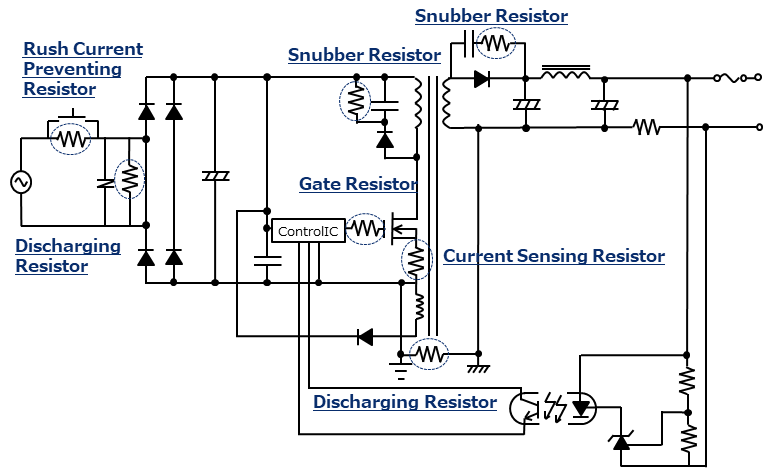
The following is an example of current detection by a current sensing resistor.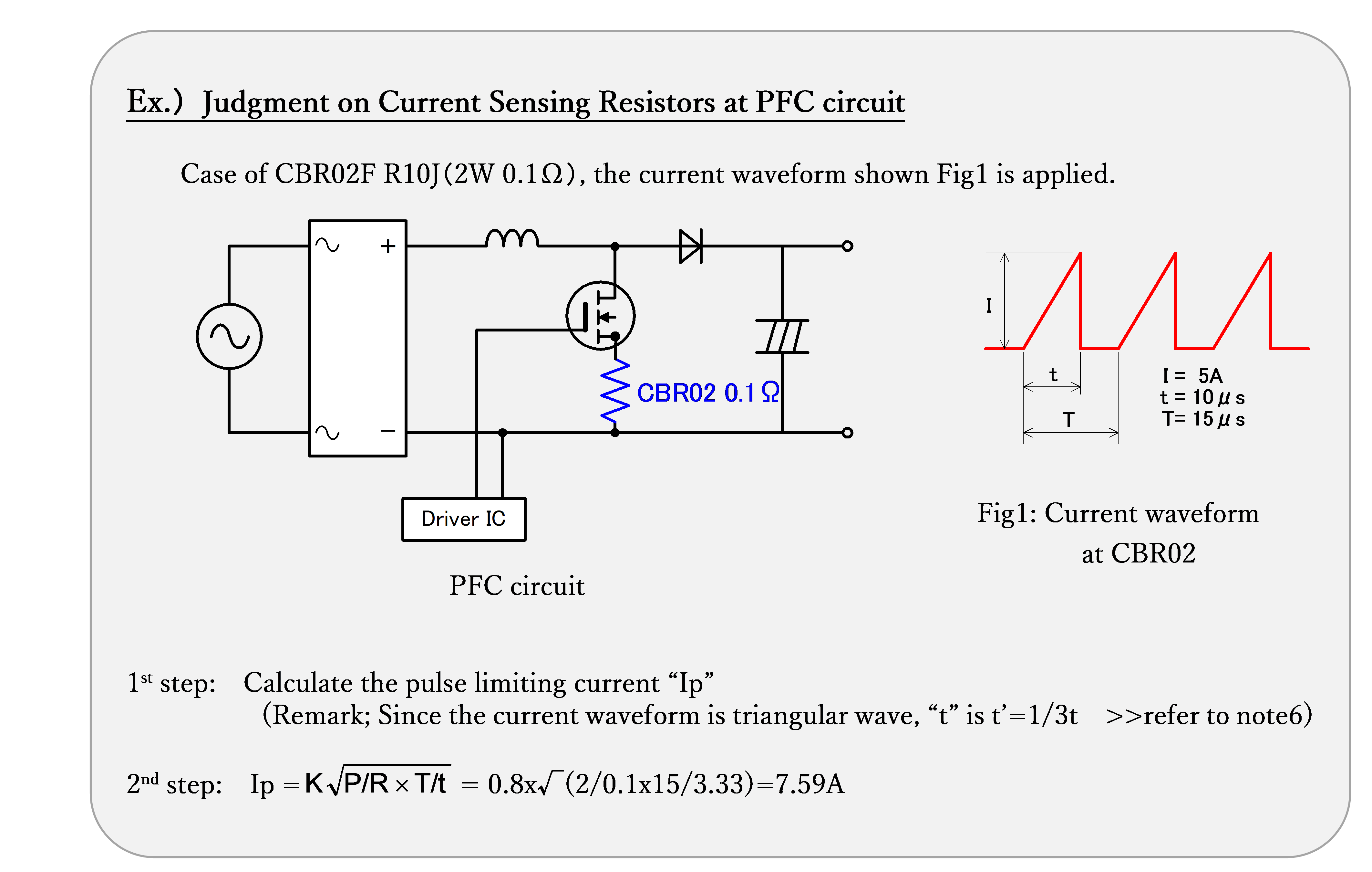
The decision of the pulse power shown above is just examples of the modeled waveform calculation. Therefore, when using resistors, please check with the actual machine and set a sufficient margin in consideration of the usage period and conditions so that the resistors can be used stably for a long time.
V. Lineup of Resistors for Anti-Surge & Anti-Pulse applications
We also have a lineup of resistors that comply with UL, c-UL, and EN standards. The following are the resistors that are ideal for power supply circuits and high-voltage circuits.
[1] Wide range of sizes and resistance values
[2]UL and c-UL standards compliant and ideal for power supply circuits (primary and secondary).
[3]EN, UL, and c-UL standards compliant and ideal for power supply circuits (primary and secondary)
[4]Anti Surge Chip Resistors
[5]Able to prevent inrush current for power supply circuits and ultra-small 1W products added
[6]Ideal for inrush current prevention circuits and current sensing. Non-inductive type is also available.
*Click here for Anti Surge & Preventive Inrush Current Resistors.
Note: These documents are subject to change without notice.
Please check the latest information when considering the use of our products. → Click here for inquiries
– – – – – – – – – – – – – – – – – – – – – – – – – – – – – – – – – – – – – – – – – – – – – –
We can judge the usability of our products in the actual waveforms for you. Please feel free to contact us from the following:
-
Click here for a list of resistors suitable for anti surge/pulse applications.
-
Click here to quickly search for products by power rating/resistance value.
-
Click here for other inquiries.


